#hamel Beaumont
Text

British soldiers from the Lancashire Fusiliers await the order to advance - Beaumont-Hamel, Somme 1916
#world war 1#world war one#ww1#hamel Beaumont#Somme#1916#britisharmy#lancashire#Lancashire fusiliers#ww one
387 notes
·
View notes
Text
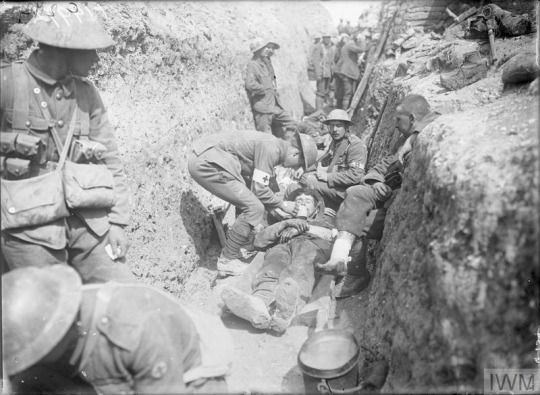
Wounded men of the 1st Battalion, Lancashire Fusiliers, being tended in a trench in the 29th Division's area near Beaumont Hamel on the morning of the initial assault, 1st July 1916.
28 notes
·
View notes
Photo

British troops eating their Christmas dinner in a shell hole, Beaumont Hamel, 25th December 1916
#WW1#World war one#The great war#The First World War#1918#1917#1916#1915#1914#historical photos#history#world history#military history#military#british#british army#canadian history#canada remembers#archives
321 notes
·
View notes
Text

A patrol crawling forward during the attack on the German trenches at Beaumont Hamel, 1st July 1916. The slope of the defenders' hill is clearly visible.
29 notes
·
View notes
Text
Imagine thinking "Recruiting Sargent" by Great Big Sea is a PRO-War song. Holy fuck. It's literally about the Battle of Beaumont-Hamel! You know, that time in WWI where the Blue Puttees (Newfoundland soldiers) were fucking slaughtered because Britain didn't know or care what the fuck they were doing? And just ordered everyone to start marching across No Mans Land in the middle of gunfire? And the soldiers were of course cut down with such ease that less than 10% of the Newfies survived? Yeah, Pro-war my ass.
20 notes
·
View notes
Text

Many crawled in; many badly wounded, others shell-shocked. Two of the latter were quite mad (one had taken off hall his clothes), and fired at their own trenches whenever anyone showed himself.
From an account given by Major G.V Goodliffe's on the British attack towards Beaumont Hamel on the first day of the Battle of the Somme.
26 notes
·
View notes
Text
In loving memory of every soldier in every Gundam series whose job is to drive a mobile SAM battery onto a battlefield, launch a series of utterly ineffectual missiles at the giant robots, and then promptly die.
Not since the Newfoundland Regiment was mulched at Beaumont-Hamel have so many died so bravely so quickly to achieve so little.
2 notes
·
View notes
Text
4 July 2023
These Green Fields of France
Paris
4 July 2023
On the 1st of July 1916, a thousand tragedies played out in a thousand places. It seems monstrous to classify them as ‘better’ or ‘worse’ than any other, but perhaps one of the saddest stories of the entire war happened at Beaumont Hamel, a short distance from Thiepval and Pozieres. It was here that the 29th Division, fresh from the horrors of Gallipoli, attacked. Among them were the Royal Newfoundland Regiment.
In the early 20th Century, the modern Canadian provinces of Newfoundland and Labrador were their own nation - the Dominion of Newfoundland. Their population was small, but they managed to raise a battalion - the so-called ‘Blue Puttees’ - to fight in France. They’d diverted to Suvla Bay on the way, but now the 780 active officers and men had reached the Somme, ready to take part in Britain’s largest push of the war. These men did not consider themselves Canadian - they were Newfoundlanders and proud of it, and likely had more bond with the British of the 29th, who had shared the experience of Gallipoli, than their neighbours in the CEF.
That July morning, the 29th’s attack, like most divisions on the northern and central parts of the Somme front, was meeting with disaster. The 86th and 87th Brigades were bogged down before the German wire, and the GOC, Major-General De Lisle, had no way of knowing precisely what was becoming of his men. Reports came in that British troops had apparently broken through - if so, they needed support. De Lisle committed the 88th Brigade, the Newfoundlanders amongst them.
The British trenches were so clogged with the dead and wounded that the regiment was forced to go over the top from a support trench 250m behind the British front line. As they emerged, they were suddenly the only moving troops visible to the Germans - all of the enemy’s fire fell upon them. Ahead in No Man’s Land was the ‘Danger Tree,’ a skeletal husk that was meant to be used as a way point, towards which the Blue Puttees now headed. Unfortunately, the Danger Tree was known to the Germans, who had the area presited for artillery.
As far as I’m aware, none of the Newfoundlanders made it anywhere near the German line. It was the Nek played out in France, but drawn out and - incredibly - even worse. Of the 22 officers and 758 men of the Blue Puttees that set out that day, only 68 were present at roll call the next day. When General De Lisle reviewed the situation, he made a poignant, perhaps even somewhat self-critical, remark - “It was a magnificent display of trained and disciplined valour, and its assault only failed of success because dead men can advance no further.” Only one battalion - the 10th West Yorkshires - suffered worse casualties.
Newfoundland never recovered. The high casualties, combined with the Great Depression and political scandals, led to the revokation of responsible government in the 1930s and the absorption of Newfoundland into Canada in 1949. 1st July, for most Canadians, is Canada Day, but for the people of Newfoundland and Labrador, it remains a day of mourning. It’s a graphic reminder of how war can destroy not only men’s lives and bodies, but the hopes and dreams of whole peoples.

We left Amiens at 8.30 for our last battlefield tour - it feels like years since we first scaled Plugge’s Plateau. Our first stop was the Querrie British Cemetery. I had reached the point by then where I felt entirely numb to cemeteries; even the most intimate of epitaphs failed to get through an emotional weariness created by seeing grave after grave after grave. I was hit a little by one discovery - in this cemetery for the men of the war to end all wars, there’s a British pilot shot down during the Battle of France in 1940. But even then, that was a moment of pause rather than an emotion - a brief moment to say ‘huh’ rather then anything deep and moving. I thought there was no more the Western Front could give me.
Next we went to Pozieres Windmill (after swinging past Albert for photos of the famous tower), which I’ve visited before. I still like the area - the memorial to the Tank Corps is across the road, so I stopped to look at that before following the group to the Windmill. The first thing you’ll notice about the Windmill is the lack of a windmill - there was one, once, but it was blasted apart by artillery during the ferocious battles on 1916. This is the place that Charles Bean described as being ‘more densely sown with Australian blood than any other place on Earth.’ In six weeks, as many Australians died as during the whole Gallipoli campaign.

When I last came here, there was a field of little hand-made crosses dotting the field beyond the craters. You could walk straight out there and stand amongst them - and to the WWI Animals Memorial, which is behind the Windmill. No more. A hedge blocks the way now, as if the Animals Memorial is too vulgar to share space with the Windmill site, and the crosses have been cleared away. Instead there’s a Hollywood Sign styled collection of words dominating the view from the tallest crater, screeching ‘POZIERES 1916 LEST WE FORGET’ at the viewer, and beyond that a carefully manicured bed of roses. I know not who did this, but it feels like the initiative of a Big Man - the Mayor, perhaps, or the DVA - thrusting aside the small, thoughtful memorials of the peasantry to make his own statement. So often this seems to be the case - be it Howard and Abbott’s hundred million dollar baby under the graves at Villers-Bretonneux, or the carefully choreographed dawn services at Anzac that replaces the small ones at the Beach Cemetaries. Memorial culture is dotted with Big Men with Big Ideas and Big Egos, and I think the world would be a better place if they left things well enough alone.

The caretakers of the battlefield at Beaumont Hamel did precisely that.
There were three artificial things I found at Beaumont Hamel, excluding the footpaths that allowed the visitor to navigate the site. The first was a small museum, basically built in a cabin that sits out of the way. The second is the big caribou monument built in the 1920s, the giant animal facing into No Man’s Land as if calling the souls of the dead home. Finally, there’s a modest replica of the Danger Tree installed to give visitors an idea of where it was. Otherwise, the battlefield, bought by the Newfoundland government and now owned by the Canadians, is left as it was for nature to reclaim. The shell holes and trenches remain, but they’re covered in grass now, and there’s patches of forest and trees. The Beaumont Hamel battlefield has returned to the Earth from whence it came, and I found that my capacity to care had not been exhausted after all.
Standing next to the site of the Danger Tree, staring out into No Man’s Land, thinking of the futile deaths of hundreds of men, and hearing the distant sound of birdsong and feeling the warm sun, I felt the urge to shout out at the sheer folly of it all, to forcibly drag the group, who I felt weren’t appreciating the site possible, to the cemetery beyond to read the names. How could you stand here and not feel? How could you still talk and laugh and joke about small nothings in a place like this?
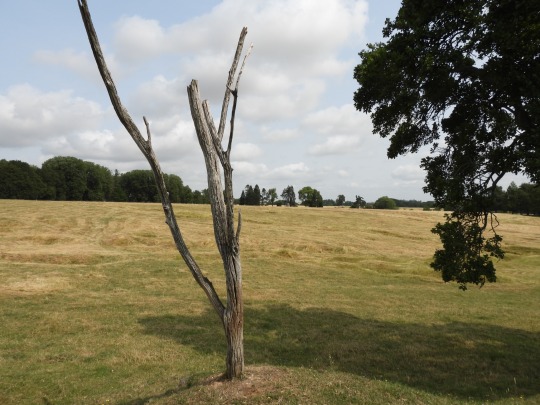
But then I talked to Maddi, and she gave me a different perspective. Of course they laugh and joke. That’s how they process going to cemetery after cemetery after cemetery. People react to confronting sites differently, and just because I might think someone’s being disrespectful doesn’t mean they are - or at least not intentionally. I think they laugh and joke about things happening in the world today for the same reason I started to go numb - because if you focused on all the grief and loss we’ve seen this past few weeks, if you made yourself feel every bit of it, you’d go mad. And did I not laugh at the Sir John Monash Centre, sitting as I was under the graves? Who am I to criticise them? Did not the soldiers I was thinking about use black humour to cope with their situations?
People are strange, and I sometimes have trouble really understanding them. I think every does, but some are better at hiding their puzzlement at humanity.

We stopped at Ulster Tower to eat in their cafe, but they weren’t serving food so we cut our losses and ate at a service station near Albert. We then went back out to Thiepval.
The Thiepval Memorial was once described as a structure consisting of ‘deranged arches,’ and that critique isn’t entirely wrong, but I’ve always found it strangely beautiful - more so than the more famous Menin Gate. This discordant memorial, situated in the middle of the most beautiful part of northern France, lists the names of the missing of the Somme; British and French. I don’t know what the group discussed here, because I walked up the steps alone. I found a name for a family member, then stepped up to stand under the central arch, where the stone reading ‘their name liveth forever more’ resides. From here, you can see the cemetery - French to the left, British to the right, the Cross of Sacrifice between them.
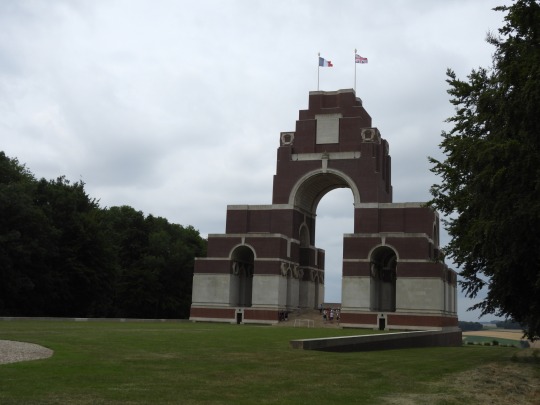
I walked down there. Normally I’d walk among the graves, looking for interesting epitaphs, but this time I just sat down in front of the unknown soldiers and, as Eric Bogle’s famous song goes, sat for a while ‘neath the warm summer sun. Just me and him, whoever he was.
There is no such thing as a necessary war - even when you’re fighting to defend yourself or someone else, you’re doing so because somebody attacked you. There is no glory, and fundamentally no point, in trying to achieve political goals through military might. All those great ‘heroes’ of conquest - Alexander, Caesar, Napoleon - I find them contemptous. War is young men - kids, even - dying for old men. It is violent, it is grotesque, and any statesman who would consider it anything more than an absolute last resort isn’t worth their salt.
There’s heroism in war, I will say that - the fighter pilots of the Battle of Britain, the Allied troops who stormed Normandy, the stretcher bearers who risked life and limb to save others. Mostly it’s just killing and dying. I can’t look at the Newfoundlanders, or the men at the Nek, or Bullecourt, or Chemin des Dames or Passchendaele or a thousand other stories of military failure across history - and say they ‘sacrificed’ for us. They died for nothing. They didn’t shorten the war by a single second. They didn’t die for our freedom. The only way we can make these deaths mean something - anything at all - is to endeavour never to let waste like this happen again. To research their histories, to tell their stories, to reveal everything warts and all, and hope and pray that the lesson will stick.
Maybe one day we’ll learn.

We’re in Paris now - our last teaching exercise is tomorrow. I’m filled with a sense of melancholy, but at the same time relief. I think I’m about ready to step out of the front line.
3 notes
·
View notes
Text
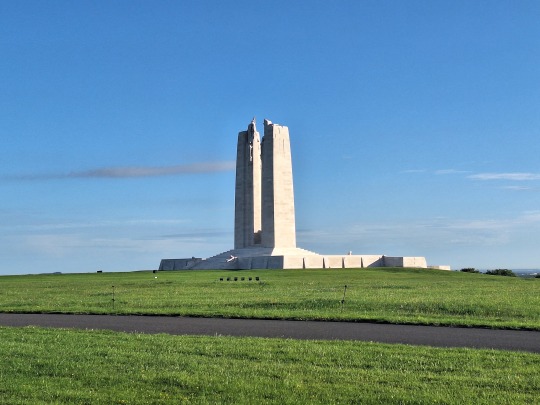
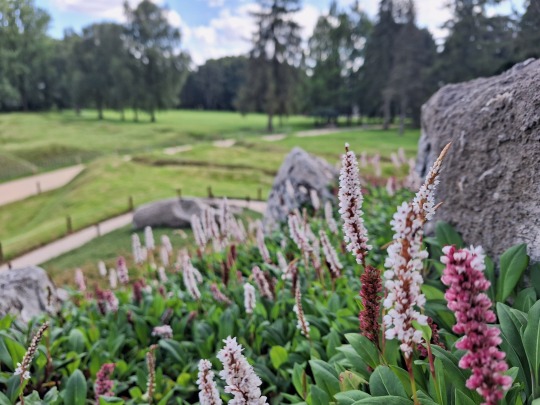
A clear morning at the Canadian National Vimy Ridge Memorial, Pas-de-Calais; and a warm late-afternoon at the Beaumont-Hamel Newfoundland Memorial, Albert.
I am still very much trying to wrap my head around the weight of working here for the next four months...
#world war one#ww1 history#we played the role of visitors today#but barely had time to take everything in#definitely excited but equally terrified
6 notes
·
View notes
Text



RATS WOULD REPORTEDLY EAT THE UNBURIED CORPSES DOWN TO THE BONE.
PIC(S) INFO: Spotlight on probably the one war photograph that has been etched into my psyche for as long as I've been alive -- A skeleton, with its arm draped across its neck, of a dead German soldier outside a dugout near Beaumont Hamel, November 1916. 📸: Ernest Brooks (lieutenant).
The truly traumatic (and horrific) photograph was later illustrated and featured in a "Predator" comic-book published by Dark Horse Comics in 1992.
Artwork by Dan Barry and Chris Warner. Story/script by Dan Barry & Mike Richardson.
Source: www.iwm.org.uk/collections/item/object/205193130.
#World War I#The Western Front#WWI#WW1#War photography#World War 1#Predator: The Bloody Sands of Time#The Bloody Sands of Time#War Comics#Dark Horse Comics#Dark Horse Books#Dark Horse#France#German Army#War Dead#The Great War#Great War#Western Front#World War One#1916#Death#Skeleton#Trench Warfare
2 notes
·
View notes
Text
Hundreds gather for Memorial Day ceremony in St. John's
While the rest of the country celebrates July 1 as Canada Day, Newfoundland and Labrador also recognizes the date as Memorial Day in recognition of the anniversary of the Battle of Beaumont-Hamel.
from CBC | Newfoundland and Labrador News https://ift.tt/Z1n2wTi
0 notes
Text

A skeleton, its arm across its neck, of a dead German soldier outside a dugout near Beaumont Hamel, November 1916.
60 notes
·
View notes
Text
It's Canada Day but in Newfoundland and Labrador it's also Memorial Day. We remember those who died at the Battle of Beaumont Hamel in the First World War. We'll observe Memorial Day until noon and then celebrate the great country of Canada the rest of the day.
0 notes
Photo
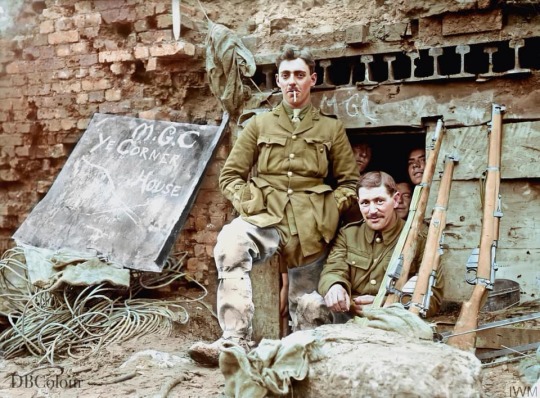
Machine Gun Corps Lieutenant and a Sergeant wearing trench waders, standing at the entrance of a captured German dug-out under the ruined Church at Beaumont Hamel. November, 1916.
Credit
#WW1#The First World War#The Great War#1917#1918#1916#history#historical photos#military history#british army#german army#french army#canadian history#WWI#Edwardian
214 notes
·
View notes
Text
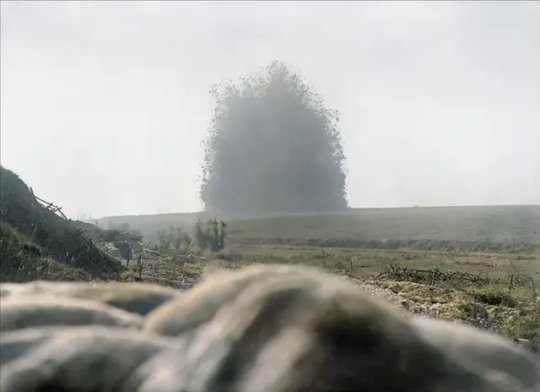
The mine under German front line positions at Hawthorn Redoubt is fired 10 minutes before the assault at Beaumont Hamel on the first day of the Battle of the Somme, 1 July 1916.
25 notes
·
View notes
Video
youtube
La bataille de Beaumont Hamel, 1ère guerre mondiale en vue aérienne par ...
0 notes